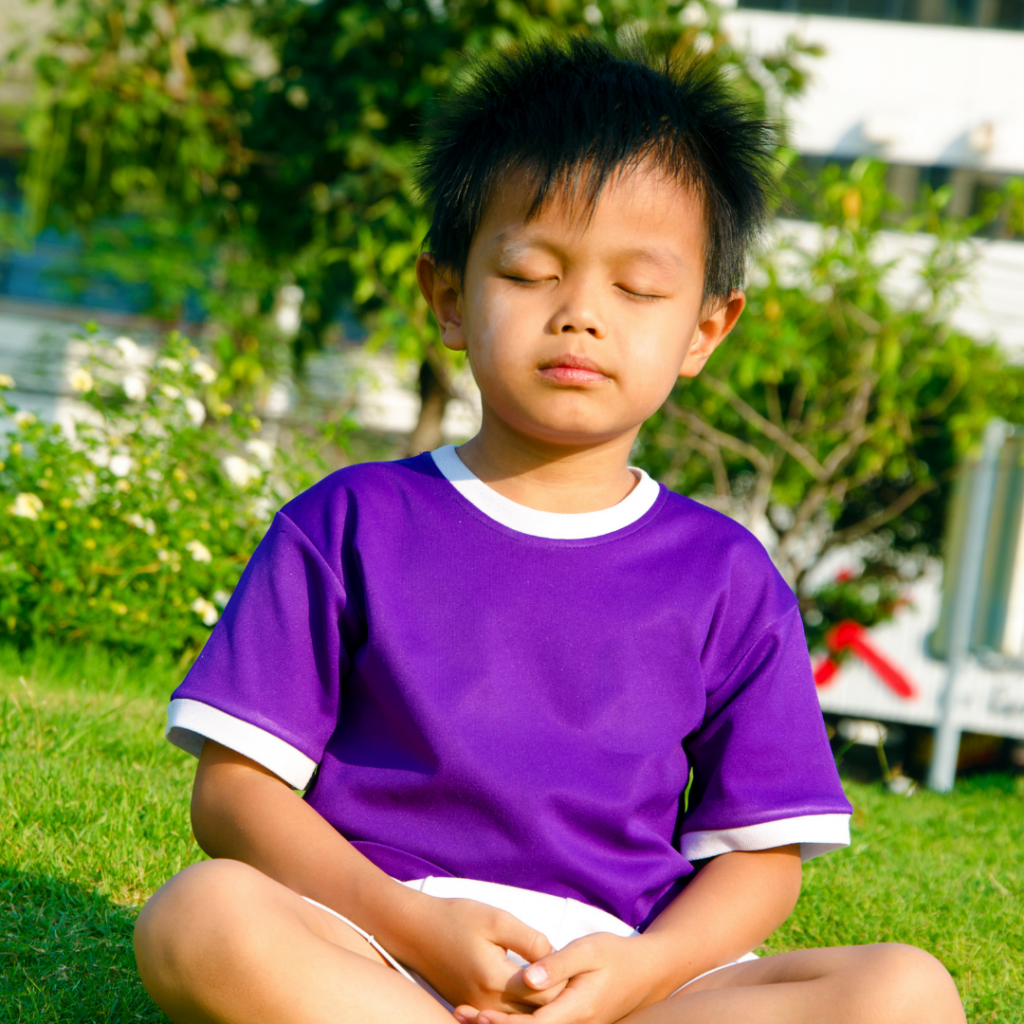Mindfulness, in its simplest definition, is the ability to be aware of the present moment. It has been used as a coping strategy by many people in order to alleviate anxieties, reduce stress, and regulate their emotional responses. Oftentimes mindfulness is framed in a way where silence, peace, and gentleness are large components of the practice, so it may feel impossible to incorporate this into a classroom full of rambunctious preschoolers. However, mindfulness is more than just silence. There are ways to include it into our learning environments so it helps set a strong foundation of mental health for the children in our care.
Why children need mindfulness

Mindfulness gives us the ability to face and overcome adversities. In the early years, these adversities can look like infants crying to get their basic needs met, toddlers facing challenges with communication and restraint, and preschoolers navigating social relationships. By the time they reach the kindergarten and school-aged levels, children have already developed their own coping strategies, which can either be favorable or detrimental to their well-being. A mindfulness practice, developed at an early age, can ensure that their self-regulation methods will align with a healthier and more positive trajectory.
Keep calm and preschool on
The conventional image of mindfulness practice is that we must be sitting down cross-legged in a serene environment that’s well lit and smells faintly of lavender. While that certainly helps, it’s also the exact opposite of an average preschool classroom.
Mindfulness isn’t about being silent; it’s about being present.
Here’s how mindfulness can be a part of your learning environment:

- Modeling mindfulness. A culture of mindfulness in the classroom begins with the adults, and a level of intentionality needs to take place before it can be introduced to the children. So do some research, adopt a reflective practice, and see what mindfulness means to you as an educator first, before making it a part of the curriculum.
- Breathing exercises. A core component of being mindful is simply about taking notice of your breath, and there are a number of developmentally appropriate exercises that can be done with your group. The practice of intentional breathing can help with stress reduction and self-regulation during emotionally charged moments. Giving the children the opportunity to “practice” will give them the means to respond healthily during instantaneous, real-time experiences.
- Emotional recognition. The ability to recognize and express our emotions is a valuable skill that becomes much easier with mindfulness. So be sure to include activities that identify emotions in your program. Also, encourage the children to recognize one another’s feelings (“How do you think your friend feels right now?”), and model your own emotional regulation (“I am feeling upset so I will take three deep breaths before I speak to you”) so that mindfulness becomes a seamless component of your classroom.
Active mindfulness
The fast-paced energy that children have means that sometimes, mindfulness has to be practiced in the heat of the moment. Luckily, this is very possible. There is a practice called walking meditation that invites its practitioners to have an awareness of every step they take, as well as a recognition of what’s happening in the environment. Through a preschool lens, this can be simplified and easily incorporated as the children play.

Counting is one of the most accessible ways children can be mindful. Asking them to count their steps as they walk around the playground, or asking them to count the rungs as they climb a ladder is a way to exhibit mindfulness in motion. Before an art activity, take a moment to go through a checklist of needed items before the children begin (“Does everyone have their smock? Their paintbrush? Their paper?”). This allows the children to be present as they play and gives them an opportunity to re-engage with their actions. A game of “I Spy” during a community walk is a practice in mindfulness because it requires a level of awareness of one’s surroundings. There’s a high probability that mindfulness is already happening within our programs; we simply have to identify, highlight, and extend the children’s mindful experiences as they play.
Mindfulness in daily settings
When it comes to children and mindful practice, the expectation isn’t to turn them into meditation masters who sit and walk silently for long periods of time. A practical benefit of incorporating mindfulness into an early years program is that it doesn’t require too many additions to your daily curriculum and instead, can be a simple enhancement to your current work. Its inclusion can be fairly simple and seamless because, at its best, mindfulness happens all of the time. Unfortunately, mental health deterioration is on the rise, and the little ones in our care will be faced with more unforeseen challenges as they get older. This is why mindfulness practice as early as the preschool years is proving to be more vital as part of our children’s development!


